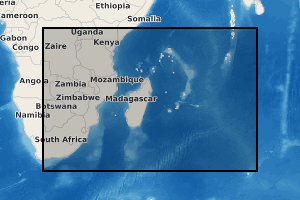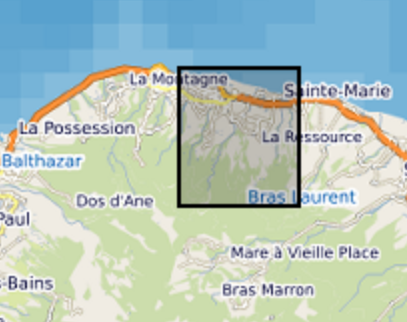
Type of resources
Available actions
Topics
INSPIRE themes
Keywords
Contact for the resource
Provided by
Years
Formats
Representation types
Update frequencies
status
Scale
-

Elevational Transect on the East side of the Piton des Neiges. Implementation of small permanents plots every 200 m of height between 350 m and 2950 m. Differents biotics and abiotics parameters are observed on plots: - Climatic variables (T, RH) - Physico-chemical analyses of grounds - Vegetation and arthropods inventories...
-

WW3 model reanalysis on SWIO (south-western indian ocean) area at 0.5 degree of resolution
-

Instrumentation in river. The parameters are the following ones: - water level (available) - Temperature (available) - Conductivity (to set up) - Turbidity (available) - pH / dissolved oxygen / Potential oxydo-reduction (to set up) Laboratoire Géosciences Réunion – IPGP
-

Piezometer measurements in watershed "Rivière des Pluies", Reunion Island Continuous measures in groundwater: - Level water (systematically) - Temperature (sometimes) - Conductivity (sometimes) Laboratoire Géosciences Réunion – IPGP
-

The coastline or shoreline is the geographical boundary between sea and land. It corresponds according to the SHOM to "the leash of the highest seas in the context of an astronomical tide of coefficient 120 and under normal weather conditions (without overcost phenomenon). The coastline as defined above is not directly identifiable continuously on the ground or on a satellite or aerial image. From a perspective of studying the displacement of the shoreline, indicators allow us to approach this notion (the vegetation limit associated with the infrastructure limit, the beach limit, etc.). On the reef shoreline of Reunion Island the limit of vegetation and infrastructure as well as beach limit were retained. This limit results in the production of a line-type vector geographic information layer in a GIS resulting from the photo-interpolation on Pléiades satellite images. Pleiades satellite images from the Kalideos Réunion database (CNES) have been used since 2016 to study the position of the shoreline annually. Launched in 2011, Pléiades is a very high spatial resolution spatial image system (panchromatic optical instrument at 70 cm and 2.8 m multispectral) operating in the visible and near infrared with a swath of 20 km UMR Espace-Dev
-

Climatological data from the meteo station of Piton Fougeres (alt.1300 m), Reunion Island - Air temperature - Air relative humidity - Soil temperature - Soil humidity - Leaf wetness sensor - Pluviometry - Photosynthetically Active Radiation (PAR)
-

Climatic data from the meteorological station of Mare Longue (primary forest, 300m of elevation) UMR PVBMT
-

Rain gauge measurements in watershed "Rivière des Pluies", Reunion Island 2 types of rain gauge: - Pluviographe: rain gauge with tipping (0,2 mm). Location: Piton Fougères - Adding rain gauges which is applied the chemistry water protocol. Location: Piton Fougères and University (Moufia-Saint Denis) Laboratoire Géosciences Réunion – IPGP
-

Elevational Transect on the West side of the Piton des Neiges. Implementation of small permanents plots every 200 m of height between 750 and 2350 m. Differents biotics and abiotics parameters are observed on plots: - Climatic variables (T, RH) - Physico-chemical analyses of grounds - Inventories of vegetation, arthropods
-

The beach profile is a sectional representation of its topography. The beach topography and its dynamics (by beach profile or transect approach) is illustrated by the acquisition of altimetry data along a fixed profile. 22 profiles are regularly monitored on the reef coast of Reunion Island: 2 profiles per year before the swell seasons of summer and austral winter; the impact of the events of strong swells (cyclones, southern swells) is systematically measured on the labeled Dynalit sites and more sporadically on the other sites. The methodology deployed locally since 2012 involves two Topcon Hiper II receivers (base and mobile) and one Topcon FC-250 controller (field notebook).
 Geosur
Geosur